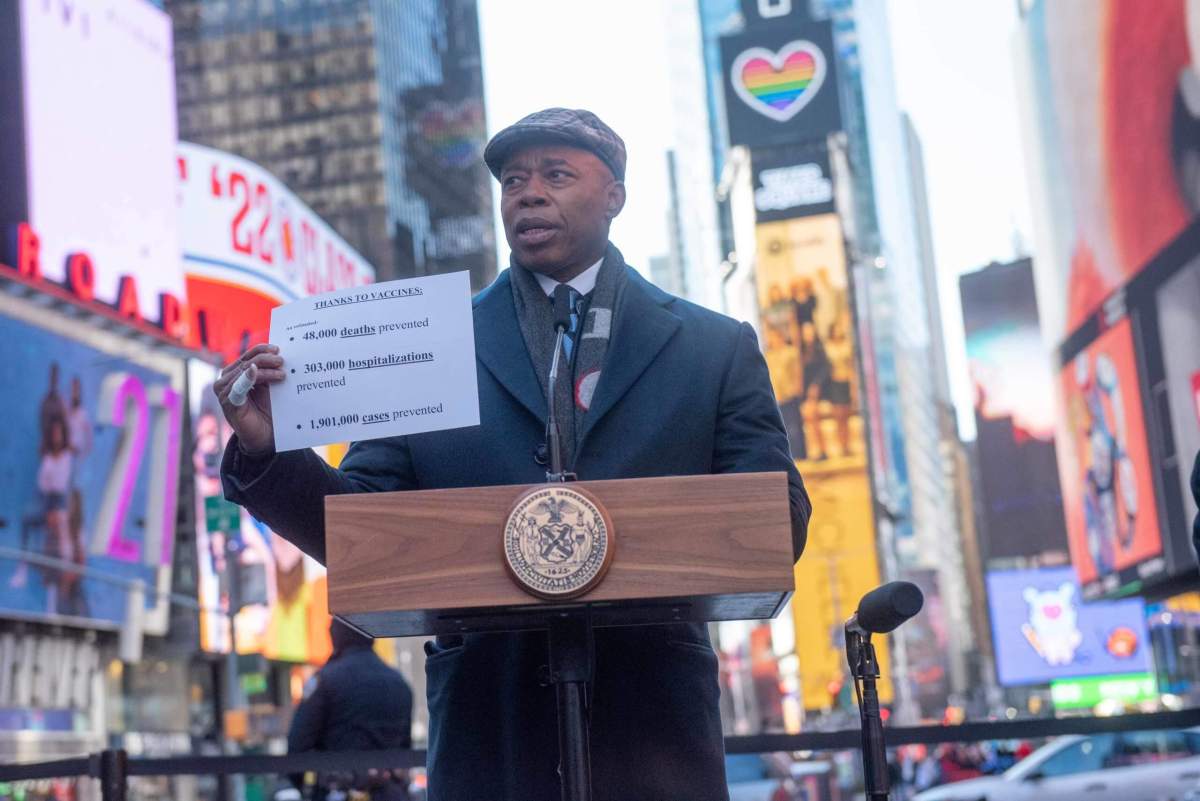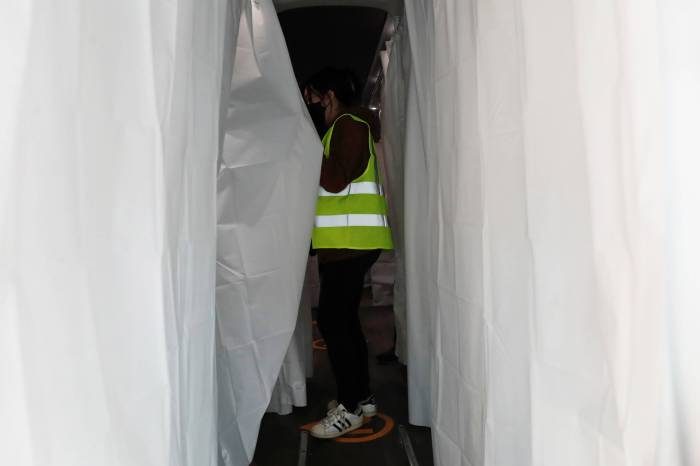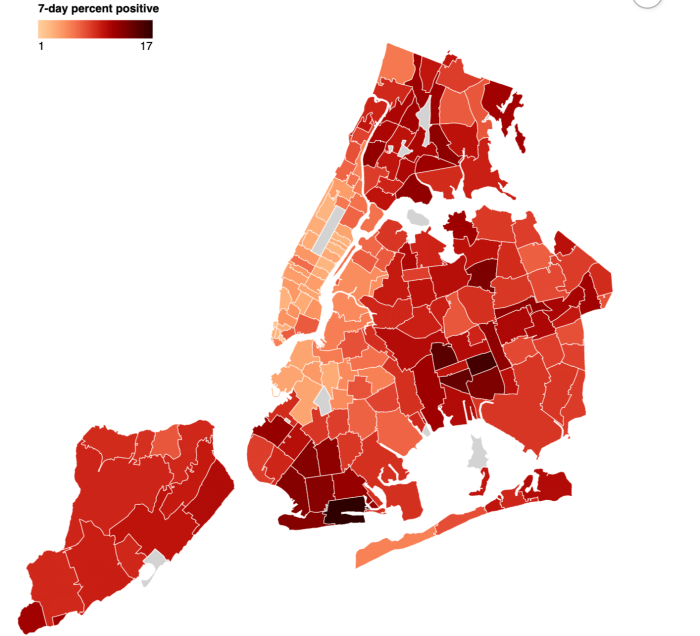Two major coronavirus restrictions expired in New York City Monday, as promised by Mayor Eric Adams if case rates remained low.
The city’s “Key to NYC,” which required patrons of indoor venues like restaurants, theaters, gyms, and movie theaters, has officially been rolled back, though individual restaurants can still ask for proof of vaccination and require masking indoors. Schools are also now mask-optional for students five and over, though younger students, who are ineligible for the vaccine, are still required to wear face coverings in their classrooms.
Former Brooklyn Beep Adams promised New Yorkers he would relax the rules if the number of cases in the city stayed low, and they have — citywide, new cases, hospitalizations, and deaths are slowly but steadily decreasing. According to the city’s new “risk alert” system, community spread is low, but official guidance still recommends mask-wearing in public settings where the vaccination status of other people is unknown.
Numbers are decreasing, but they’re still not low — case rates in the city were at historic highs early this year as the extremely-contagious Omicron variant swept the city. According to the federal Centers for Disease Control, community transmission in Kings County is “substantial,” the second-highest category, with just over 1,3000 new cases and 35 deaths in the last seven days, according to the most recent data. The test positivity rate is hovering at just around 1 percent.
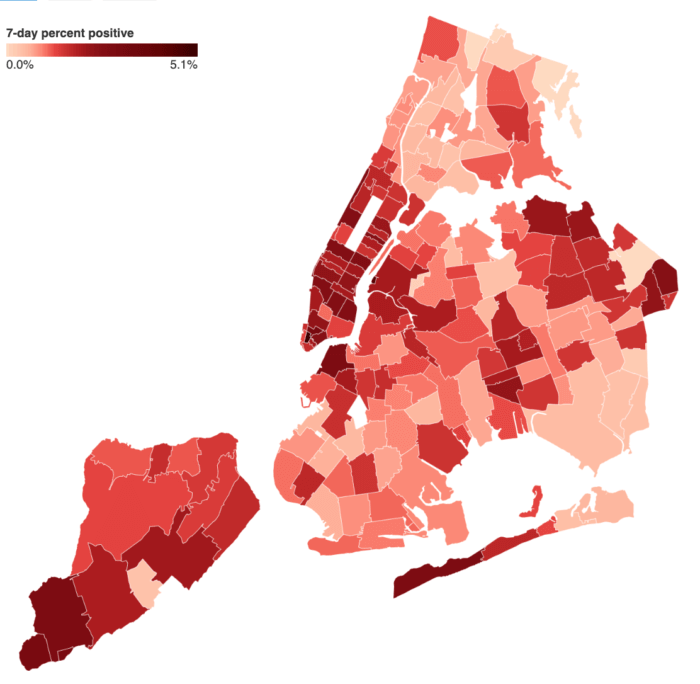
Brooklyn’s 7-day case rate, of 12,179.8 per 100,000, is slightly lower than the citywide rate, but the borough’s death rate is higher — 417 per 100,000 compared to New York City’s 407.55 per 100,0000.
Across Brooklyn itself, positivity rates vary widely. Brooklyn Heights, Downtown Brooklyn, and DUMBO have the highest positivity rate of any ZIP code in the borough — nearly 3 percent of tests have come back positive there between Feb. 26 and March 4, higher than the citywide 7-day average positivity rate of 1.33 percent in the same period of time. Kensington/Windsor Terrace, on the other hand, had only a .51 percent positivity rate, followed closely by Sunset Park at .55 percent.
Since last year, the case rate in 11201, the ZIP code containing Downtown Brooklyn, DUMBO, and Brooklyn Heights, has had a case rate lower than city-and-borough-wide averages, but the testing and vaccination rates there are above average. By contrast, Borough Park/Kensington’s case rate has roughly kept pace with the wider averages, and the test rate there is slightly lower.
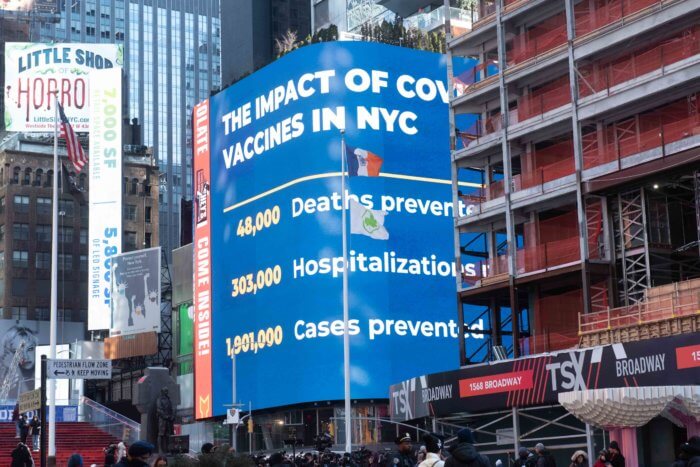
Some neighborhoods have similar positivity rates, but vastly different rates of actual tests. Brighton Beach/Coney Island/Seagate has a 1.11 percent positivity rate as of March 7, while Bedford-Stuyvesant/Clinton Hill, Fort Greene’s rate is 1.4 percent. But in Brighton Beach/Coney Island/Seagate, only 995 people were tested in the last seven days — fewer than 300 per 100,000 people — resulting in just 11 positive tests. In Bedford-Stuyvesant/Clinton Hill/Fort Greene, nearly 3,0000 people were tested that same week, or more than 935 per 100,0000, with 30 positive tests.
According to city data, nine public schools in Brooklyn have at least one positive case as of March 6, but all schools and classrooms are still fully open.


